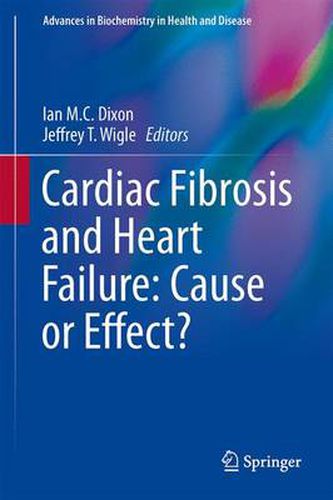Readings Newsletter
Become a Readings Member to make your shopping experience even easier.
Sign in or sign up for free!
You’re not far away from qualifying for FREE standard shipping within Australia
You’ve qualified for FREE standard shipping within Australia
The cart is loading…






This title is printed to order. This book may have been self-published. If so, we cannot guarantee the quality of the content. In the main most books will have gone through the editing process however some may not. We therefore suggest that you be aware of this before ordering this book. If in doubt check either the author or publisher’s details as we are unable to accept any returns unless they are faulty. Please contact us if you have any questions.
The unique biology of cardiac fibroblasts and related cells, such as cardiac myofibroblasts and valvular interstitial cells, distinguish them from other fibroblastic cells, a concept that is only beginning to be widely appreciated. Further, the natural signals that stimulate and inhibit cardiac fibrosis within these cells are not well understood. This volume compiles articles that address the molecular mechanisms that control the synthesis and secretion of the cardiac ECM. The book showcases chapters that highlight discussion of role of Transforming Growth Factor
(TGF ), an important fibrogenic cytokine and its downstream effectors SMAD in many cardiac diseases. Further, the contributions highlight information to discuss endogenous inhibitors of cardiac fibrosis, as well as advances in tissue engineering specific to matrix in the heart. Finally, discussions of unifying mechanisms of matrix remodeling in valves and myocardium are presented.
The mechanisms involved in the stimulation of cardiac fibrosis are not fully understood. In most cases the marginal attenuation of cardiac fibrosis as a result of a given therapy is a beneficial side-effect linked to other primary effects on other cells, especially cardiomyocytes. Very few drugs or agents are known to affect the function and dysfunction of cardiac fibroblasts and myofibroblasts alone. The book helps to translate the information gathered within to allow us to alter the course of fibrogenic events that are typical of cardiac fibrosis, and thereby reduce their burden on the patient and on society itself.
$9.00 standard shipping within Australia
FREE standard shipping within Australia for orders over $100.00
Express & International shipping calculated at checkout
This title is printed to order. This book may have been self-published. If so, we cannot guarantee the quality of the content. In the main most books will have gone through the editing process however some may not. We therefore suggest that you be aware of this before ordering this book. If in doubt check either the author or publisher’s details as we are unable to accept any returns unless they are faulty. Please contact us if you have any questions.
The unique biology of cardiac fibroblasts and related cells, such as cardiac myofibroblasts and valvular interstitial cells, distinguish them from other fibroblastic cells, a concept that is only beginning to be widely appreciated. Further, the natural signals that stimulate and inhibit cardiac fibrosis within these cells are not well understood. This volume compiles articles that address the molecular mechanisms that control the synthesis and secretion of the cardiac ECM. The book showcases chapters that highlight discussion of role of Transforming Growth Factor
(TGF ), an important fibrogenic cytokine and its downstream effectors SMAD in many cardiac diseases. Further, the contributions highlight information to discuss endogenous inhibitors of cardiac fibrosis, as well as advances in tissue engineering specific to matrix in the heart. Finally, discussions of unifying mechanisms of matrix remodeling in valves and myocardium are presented.
The mechanisms involved in the stimulation of cardiac fibrosis are not fully understood. In most cases the marginal attenuation of cardiac fibrosis as a result of a given therapy is a beneficial side-effect linked to other primary effects on other cells, especially cardiomyocytes. Very few drugs or agents are known to affect the function and dysfunction of cardiac fibroblasts and myofibroblasts alone. The book helps to translate the information gathered within to allow us to alter the course of fibrogenic events that are typical of cardiac fibrosis, and thereby reduce their burden on the patient and on society itself.